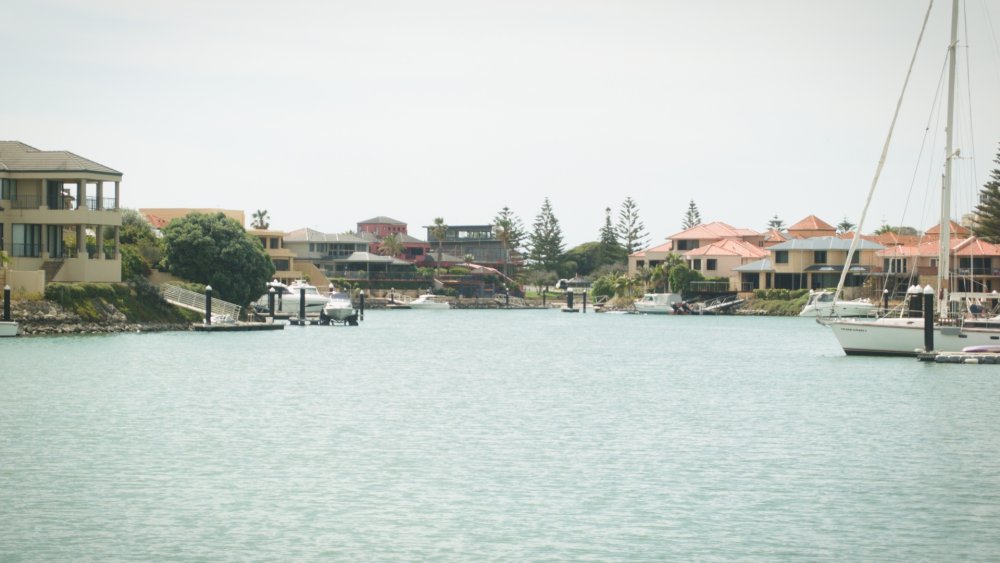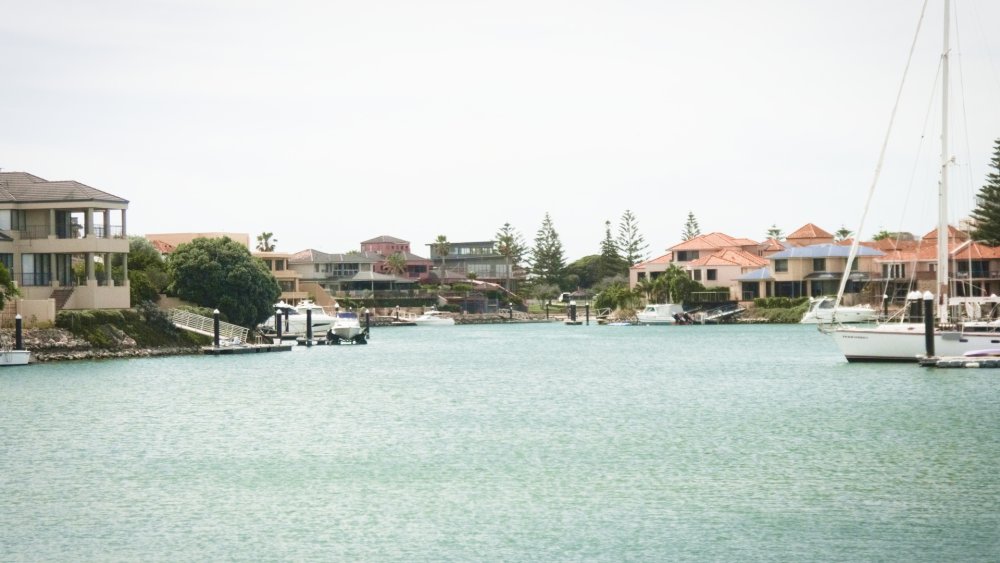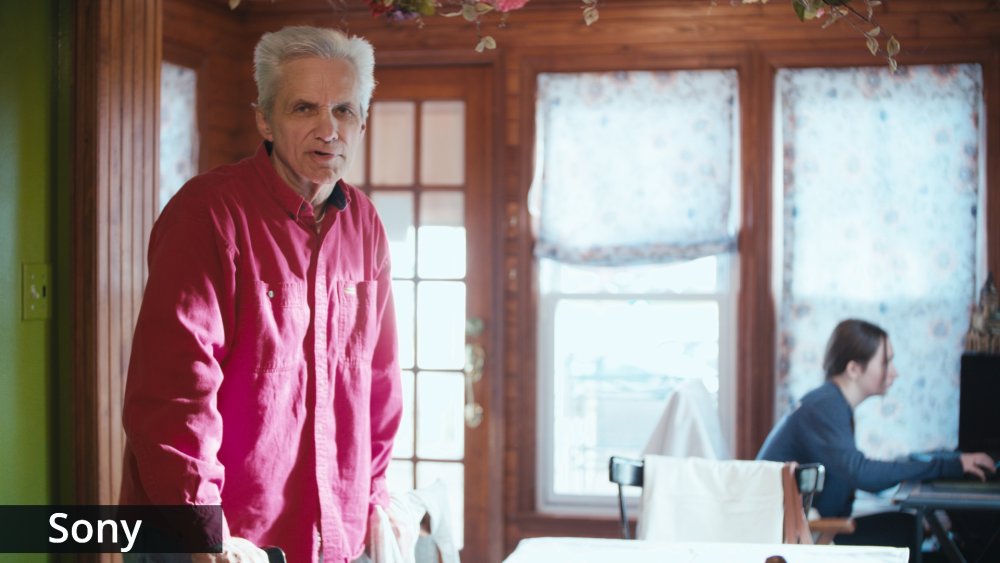-
Posts
7,988 -
Joined
-
Last visited
Content Type
Profiles
Forums
Articles
Everything posted by kye
-
Just another normal thread of humans discussing cameras on the forums, nothing to see here...
-
I am reviewing my lineup and decided to compare the OG BMPCC to the GH5, and ended up filming shot-by-shot duplicates and matching them in post. The results were surprising. I noticed that lots of shots had differences because the vNDs on the two setups were in different orientations and polarised the scene differently, but unless you were doing a direct comparison then that wouldn't be noticeable. GH5 was with 14-42mm F3.5-5.6 kit lens, shooting wide-open in 150Mbps UHD / HLG. P2K was with 12-35mm F2.8, shooting wide-open RAW. 1080p timeline as always. I graded each P2K shot and then graded the GH5 to match. I also shot a few of my wife as well, which matched nicely, including skin tones, but I'm not allowed to share those! The P2K has a desirable level of sharpness (being a native 1080p sensor) that is very similar to film, and I didn't need to blur the GH5 footage to match, which I suspect is due to the kit lens not being so sharp wide-open. Obviously the P2K has significantly more dynamic range, but it seems that when that is not required, the GH5 can do a pretty good imitation of it. Tools required to match shots included: contrast, saturation, colour boost, WB, exposure.. plus, I had to rotate the skintones slighty magenta, the greens slightly blue, raise the shadows slightly and tint them, and darken the saturated areas significantly. There were other tiny changes that I noticed that I didn't bother with. This isn't "basic" colour grading but matching GH5 to the legendary P2K isn't a basic goal either.
-
Yeah, looks like BM is doing their normal thing of rapidly updating things with new features and bug fixes (..and also perhaps creating new bugs from their rapid development pace? that's how Resolve is sometimes 🙂 )
-
Ambient temperature was 30C/86F which isn't a real stress-test but is better than the stupid people that test these things practically in the freezer, either to game the results because they're dishonest or because they're too stupid to realise that there are warm countries on earth too.
-
It would be useful if you wrote why you were sharing each video. I'm assuming you're watching more videos than you decide to share. That way, if you post a video that talks about things I know about I can skip it, but if you post one that mentions something new that I don't know about then I can watch. TBH I'm just looking at you post video after video and thinking "I can just search in YT and see random videos too".
-
@Jedi Master How good are your colour grading abilities? You might be better off buying the camera that's easiest to colour grade, or has the nicest out-of-the-box colour science rather than the camera with the most potential if you've got a team of dedicated pros in post-production. Sadly, I'm getting nicer colour out of my iPhone 12 than many are getting from their mega-dollar Sony cameras, simply because I have the colour grading skills of an enthusiastic amateur and they have the colour grading skills of a toddler. You may not be aware of this (many aren't) but the footage from high-end cameras often looks pretty boring when just applying the manufacturers LUT and before the professional colourists have done their work. I provided a few examples here:
-
+1 for going with one of the Blackmagic cameras. They're straight-forwards to use, record incredible images in RAW, lenses are available and practical for use, and you can concentrate on the creative aspects of the image. Seriously - the best cameras look crap when not used creatively, and the best DoPs can make the most of whatever they have access to. Optimising the equipment at the expense of the creative aspects is a ridiculous tradeoff. The point of the whole thing is making good finished videos - start there and work backwards. Don't start at the camera and work forwards...
-
The thumbnails have to grab you and make you watch, so will say whatever does that. I've seen it both ways - hype up an incremental improvement and on things that already have a lot of hype it can be the old 'done buy until you've watched this' gag... In between those two there's the 'hidden feature' that will change the world, etc etc.. when all of those don't fit, there's always ye olde faithful... product + shocked-face 🙂
-
If you'd have read the article then you'd know that he triggered the camera manually and took around 720,000 exposures to eventually get the perfect shot, and that the subject moves so fast that even with a 10 fps burst sometimes the bird isn't even in any of the frames: Good examples. I often shoot out of the window of moving vehicles while on holiday and typically shoot in high FPS video in order to be able to frame the scenery whizzing past. If you're trying to capture any scene where there are things in the foreground/mid/background then they're all moving at different speeds across the frame and so the closer the objects are the more slanted they are. Having a low RS matters more if you're going really fast. Interestingly, I shot a bunch of clips on my phone in vertical orientation to use for a slightly fancier edit (by showing multiples at a time, highlighting the differences of scenery throughout the trip) and there is zero RS because the RS was in the same orientation as the movement. That's not something I expected, but it's definitely a welcome surprise!
-
I can imagine wildlife photographers would get a lot of use from it considering that they take a long time to shoot (e.g. waiting in animal blinds etc), they have a long time in post to select the right shots, they aren't under super time deadlines to get images to a publisher, and the difference between a good image and a great one can simply be a matter of perfect timing and if you get it right there's huge rewards. Obviously this is very different the workflows of sports photographers etc. This photo and the story behind this shot comes to mind: https://www.wired.com/2016/01/alan-mcfadyen-kingfisher-dive/ I would imagine that there might be a lot of subjects where having an insane fps on the burst mode would enable you to line things up perfectly in a shot and really elevate it in a significant way. Street photographers would also benefit, with the decisive moment and all that, but they probably don't need burst modes this crazy fast. However, having said all that, it's a pretty niche application for an entire camera, so I can't see that being worth designing a camera around.
-
I've heard people say that film has rolling-shutter-like behaviour from the rotating shutter and isn't a true global shutter, but it's just that the RS was very fast and so wasn't noticeable in almost all situations. https://cinematography.com/index.php?/forums/topic/53119-why-no-rolling-shutter-on-film-cameras/&do=findComment&comment=357346
-
No digital would mean that everything was analog... Of course, since we're playing completely made up and arbitrary alternative universes, you could end up with super high resolution analog where analog tapes had ever-increasing numbers of lines and the analog circuitry became lower and lower noise and so DR went up, etc. But a digital scanner is a device with an array of photosensitive electronics that could output a digital representation of the light that was detected... but so is a camera. If you can come up with some sort of fictional law of physics that prevents one technology but not the other then good luck - I can't think of one. The only thing I could think of would be speed - that maybe the sensors are too insensitive and film can only be scanned in very slowly with long exposures required for each frame or something, but even then, tech advances so quickly that we'd simply innovate past this point and get to where digital cameras were practical again, so this limitation doesn't fulfil the rules of this fictional scenario.
-
I was talking about if digital didn't exist, not just if digital cameras didn't exist.... It's pretty difficult to dream up a scenario where digital cameras didn't exist, but for completely inexplicable reasons we still had digital film scanners, all digital image manipulation software, and then digital projectors. I mean, how on earth could you scan film but not be able to scan the world directly?
-
On everyone... Think about it - no more CGI / VFX! The industry would have to pivot to strange and alien concepts like, story, and acting, and craft!!! Oh, the humanity!
-
By the time you put a grade over it, those appear to be fine. This is with a 2383 PFE LUT and I adjusted the WB to be cooler for a bit of separation and reduced the saturation a little:
-
@TomTheDP Here's a basic match. As I don't own the LUT packs, I have just used a CST sandwich - first node converts to Davinci, second does adjustments, third converts to 709/2.4. The Alexa has no adjustments at all, Sony has a Hue rotation for skin and Tint adjustment pushing green for neutrals. These were literally done just by looking at the vector scope. Added Hue curves for the green wall and the jacket: That would be good enough for most work I'd imagine. Skintones. Always skin tones. It's where the viewer will be looking, and we're sensitive to very slight differences.
-
Yes! I definitely agree with you - there must be optimisations that can be made. Please Panasonic!!
-
I recommend doing a proper WB. I've seen a bunch of side-by-side tests where they set both cameras to the same Kelvin WB and then nothing matched. I have no idea why the cameras wouldn't all match the WB, but it looks like they never do. I'd suggest trying a custom WB on a grey card and then trying the comparison again?
-
Interesting and comprehensive analysis of GoPro from an economics / business point of view. It's 43 minutes long, but is in plain English and well constructed. It's interesting how they've managed to stabilise in the last few years and are now segmenting their lineup, which seems to be strategy that protects them from smartphones and other market pressures. Pity they didn't do that a decade ago...
-
Actually, the XH2S and P4K are great options when combined with the LUTs/powergrades from Juan Melara: https://juanmelara.com.au/products/bmpcc-4k-to-alexa-powergrade-and-luts https://juanmelara.com.au/products/x-h2sfuji-to-alexa-powergrade-and-luts Juan is a working DP and colourist, and is one of the most knowledgeable colourists online, especially when it comes to matching complex transformations. I've bought from him before and had good experiences. The A/B results speak for themselves too. Here's the Fuji A/B shots, and the P4K ones match even better.
-
My year 11 English teacher decided that there wasn't enough life education in school, so he told us stories, and let us sleep in class, but still taught us what we needed to pass the tests. One recurring theme he'd tell us stories about was how he'd get away with buying hifi equipment and smuggling it into his house without his wife finding out. The most memorable one was how he got away with buying a pair of large subwoofers, which were about 1 meter/yard cubed each. Here's the procedure he recommended: Buy them, but have the store hold them until you can arrange a good delivery time Subtly arrange for your wife to be away overnight (e.g. concert tickets for her and a friend to something she'll like but you won't and then a "girls night" stay at a hotel afterwards) Arrange to have the subwoofers delivered as soon as she's gone Put them in the corners of the room Cut some plywood to cover the sides of the subwoofers that aren't against the wall, so it's not visible Cover over the ply with a nice tablecloth and have it go all the way to the floor Put a pair of matching fancy trays and a pair of plants your wife likes and put them on top When your wife comes home, tell her you bought her some plants, if she asks about the boxes, just say they're boxes but change the subject After a few months, remove the false boxes and adjust the cloths so they don't interfere with the subwoofers, and wire up the subwoofers Only use the subwoofers on very low and only when she isn't home After another few months, you can start using the subwoofers while she is home, but only very very subtly If she ever notices, say they've been there for years and act surprised she doesn't remember - immediately start talking about their specifications and history of the company so that she is eager to change the subject I enjoyed his English classes.
-
HA! you don't hear the colourists saying they can match the lesser cameras to the Alexa in post! The first thing they will say is about managing your expectations. The second thing will be about managing your expectations. The third thing might not be about that, but also might still be.... I have no idea what your situation is, but it might not be a bad strategy to just buy a set of matching cameras and then insist on using them on every job - you'd likely lose work because you're putting conditions on things but the final quality of the projects you shoot would go up. Then you could focus on optimising your craft rather than struggling with random camera after random camera on each job, making your work increase over time and making you more desirable...
-
The footage will look highly processed, even if you shoot Prores, unless you shoot Apple Log. It's not the codec that disables all the processing, it's the Apple log. I'm pretty sure that means you can shoot Apple Log and h265 and have an image that isn't over processed, isn't the huge file sizes, and you can record internally and not have to have an SSD etc.
-
It's all slightly relative too - I recall a video that Toneh made where he tested a bunch of cameras to see what level of exposure they got at the same ISO setting, and the results were that there was quite a lot of variation despite them all being tested in controlled conditions - IIRC the differences were more than a stop different across the range of cameras.
-
LOL. That can be taken two ways.. I'd suggest it's a subtle hint rather than a comment on the cameras! In discussions with colourists where the subject comes up, opinions I've seen range from "results are limited by the quality of the footage" through to "these cameras shouldn't ever have existed"!!



















